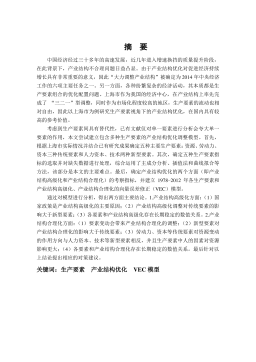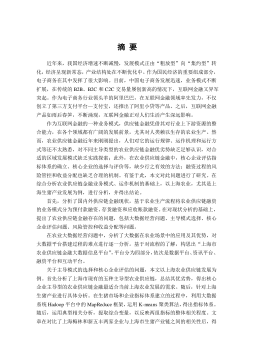一种移动WSN中基于分簇的蚁群多路径路由算法
摘要目前对于无线传感器网络的路由协议的研究主要是围绕静态无线传感器网络展开的。由于移动无线传感器网络中节点的移动容易引起网络拓扑结构变化,以及路由的中断或失效,所以人们提出的大部分路由协议不能应用到移动无线传感器网络中。基于此,我们提出了一种移动无线传感器网路中基于分簇的蚁群多路径路由算法。新算法的研究思路是将复杂问题分解成一个个小的问题。本文引用了一种基于分簇思想的移动无线传感器网络模型。模型的显著特点是将网络分成了两层,其中底层由可移动节点组成,上面一层是由部署的固定节点构成。这样问题就分解成了两个子问题,即网络的底层和上层分别如何进行数据传输的问题。对于底层,本文对移动节点先进行分簇,然...
相关推荐
-
我国基层财政困难的制度成因分析与对策研究VIP免费

 2024-09-20 46
2024-09-20 46 -
我国煤电产业链纵向交易合约机制研究VIP免费

 2024-09-20 44
2024-09-20 44 -
生产要素视角下的上海市产业结构优化研究VIP免费

 2025-01-09 8
2025-01-09 8 -
我国银行业结构与经济结构关系研究VIP免费

 2025-01-09 18
2025-01-09 18 -
大数据视角下农业供应链金融研究VIP免费

 2025-01-09 14
2025-01-09 14 -
跨国大型综合超市的规划研究VIP免费

 2025-01-09 9
2025-01-09 9 -
跨境电商农产品质量安全问题研究VIP免费

 2025-01-09 9
2025-01-09 9 -
世界市场的虚拟化与我国国际电子商务发展方向研究VIP免费

 2025-01-09 46
2025-01-09 46 -
中国政府对电力行业的价格规制问题研究VIP免费

 2025-01-09 20
2025-01-09 20 -
中小企业信息化系统集成技术研究VIP免费

 2025-01-09 30
2025-01-09 30
相关内容
-

跨国大型综合超市的规划研究
分类:高等教育资料
时间:2025-01-09
标签:无
格式:PDF
价格:15 积分
-

跨境电商农产品质量安全问题研究
分类:高等教育资料
时间:2025-01-09
标签:无
格式:PDF
价格:15 积分
-

世界市场的虚拟化与我国国际电子商务发展方向研究
分类:高等教育资料
时间:2025-01-09
标签:无
格式:PDF
价格:15 积分
-

中国政府对电力行业的价格规制问题研究
分类:高等教育资料
时间:2025-01-09
标签:无
格式:PDF
价格:15 积分
-

中小企业信息化系统集成技术研究
分类:高等教育资料
时间:2025-01-09
标签:无
格式:PDF
价格:15 积分





